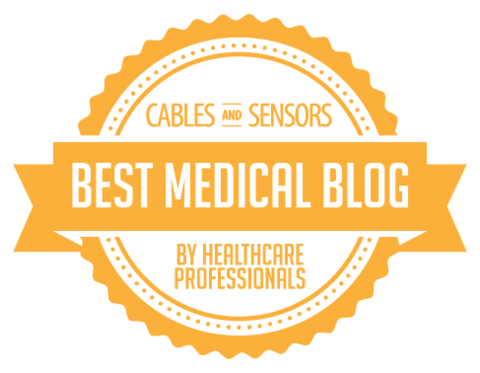Weight Loss – Is Your Neighborhood Making You Fat?
A survey of 2900 individuals found those living near more fast food restaurants and convenience stores to be 25% more likely to be obese. The Canadian survey looked at food sources within 800 and 1600 meters of homes. If there were more grocery stores versus restaurants/convenience the likelihood of obesity decreased. The link between restaurants/convenience stores versus grocery stores also decreased with distances greater than 1600 meters.
This was a short survey I found interesting and decided I’d share with you. There is no concrete evidence to say the higher number of restaurants/convenience stores is to blame for the higher obesity rates. The survey did not actually look at individual eating habits. However, if you are looking to move and make a healthy change at the same time, maybe the above is something to take into consideration!
All the best,
Lisa Nelson RD
Top 5 Key Strategies to Lose Weight Permanently
Exercise Tips if You’re Over 65
Remember, you are not too old to exercise! The US Department of Health and Human Services has issued the guide – Exercise & Physical Activity: Your Everyday Guide from the National Institute of Aging.
Being physically active does not become less important with age. Remaining active into your senior years has many benefits. Here are just a few of the benefits you’ll see by including regular physical activity everyday:
• Improved mobility for continued independence.
• Improve balance to decrease fall risk.
• Improved mental health.
• Reduce risk of disease and disability.
• Treatment for chronic conditions, such as arthritis, heart disease, and diabetes.
Fortunately, there are a wide variety of activity options you can select from and many are low cost. For example, taking a brisk walk, selecting the stairs instead of the elevator, and yard work all contribute to increase your activity level.
The Exercise & Physical Activity: Your Everyday Guide from the National Institute of Aging includes multiple exercises and activities to fit your lifestyle, preferences, and budget.
All the best,
Lisa Nelson RD
Heart Healthy Tips
Lowering Blood Pressure Through Diet – DASH Diet Plan
The DASH (Dietary Approaches to Stop Hypertension) diet is an eating plan used for lowering blood pressure through diet. Studies have shown dramatic results, in that the DASH diet can lower blood pressure in as little as 2 weeks! It’s a diet reduced in total and saturated fat and rich in fruits, vegetables, and low-fat dairy foods can significantly lower blood pressure.
HOW TO FOLLOW THE DASH DIET
Serving Sizes and Choices
To help you follow the DASH diet, the list below suggests the number of servings per day from each of the indicated food groups. These servings apply to people who require 2000 calories per day. The number of servings may increase or decrease depending on your caloric needs, which vary according to age, gender, size, and how active you are.
7-8 servings Whole Grains and Whole Grain Products per day
4-5 servings Vegetables per day
4-5 servings Fruits per day
2-3 servings Low fat or Nonfat Dairy Foods per day
2 or fewer servings of Meats, Poultry and Fish per day
4-5 servings Nuts, Seeds and Legumes per week
Limited intakes of Fats and Sweets
Tips on Eating the DASH Way
Start small. Make gradual changes in your eating habits.
Most people find it hard to make changes in their diet if they try to do too much too fast. Start slow. You are more likely to have your healthier habits be lasting ones if you make small changes that you can realistically maintain.
Treat meat as one part of the whole meal, instead of the focus.
Although meat contains protein and other nutrients, which are good for your body, it also has a lot of fat, including saturated fat, calories and cholesterol. Often people have a large portion of meat as a main course and don’t eat enough vegetables or grains.
Use fruits or low fat, low-calorie foods as desserts and snacks.
Many people enjoy snacks. This can be a healthy benefit to your diet if you choose the right kinds of foods. Instead of chips, cookies, candy bars, or high fat muffins, try foods such as fresh fruits, unsalted nuts with raisins, graham crackers, and raw vegetables.
Remember!
If you use the DASH diet to help prevent or control high blood pressure, make it a part of a lifestyle that includes choosing foods lower in salt and sodium, keeping a healthy weight, being physically active and, if you drink alcohol, doing so in moderation.
Learn more about the DASH diet: http://www.nhlbi.nih.gov/health/public/heart/hbp/dash/new_dash.pdf.
All the best,
Lisa Nelson RD
Not Enough Fat – Cutting Fat Too Low Can Impact HDL Cholesterol
When it comes to lowering cholesterol, it’s common to drastically decrease fat intake. While it’s important to reduce total fat, especially saturated and trans fats, if you limit heart healthy fats too much you can make it difficult to raise HDL (“good”) cholesterol levels.
Fat is an essential component of a healthy diet providing energy and the fat soluble vitamins A, D, E, and K. Some types of fat even reduce your risk for certain chronic diseases.
What’s important is the amount and type of fat. I recommend restricting fat intake to ~30% of your total daily calories. This would mean if you are consuming 1500 calories per day, 450 calories or 50 grams would come from fat sources.
Healthy fat sources include mono and poly-unsaturated fats. Here are examples of healthy fat sources to include in your diet in moderation:
Olive oil
Canola oil
Avocados
Seeds
Nuts
Peanut butter
Fish
Some fat in your diet actually promotes weight loss by helping you feel full longer, decreasing your likelihood to snack and overeat!
All the best,
Lisa Nelson RD
How to Lower Cholesterol in 8 Simple Steps
Supplements – How to Pick a "Whole Food" Supplement for Optimal Health
If you strive for optimal health, consider adding a whole food supplement to your daily regimen. However, you must be a savvy shopper to make sure you select a supplement that lives up to its claims. . .many are a waste of money! Things to look for:
1. Independent research – This means the company selling the product did not conduct the research.
2. Double blind, placebo controlled studies – This means neither the “patient” nor the doctor knew if they were taking the supplement or a sugar pill. Provides more reliable results.
3. Research that shows results – If the product claims to raise antioxidant levels and reduce high blood pressure then research studies need to back this up.
4. Publication in peer reviewed journals, such as The Journal of the American College of Cardiology or the Journal of Human Nutrition and Dietetics.
All the best,
Lisa Nelson RD
Juice Plus
How to Lose Weight – 5 Key Strategies to Start Losing Weight Today!

Here are five strategies you can start using today to promote long term weight loss:
1. Don’t cut calories too low – Drastic calorie restriction can slow your metabolism.
2. Eat a well balanced breakfast everyday.
3. Strength train to build muscle mass and boost your metabolism.
4. Eat regular meals and snacks – Do not go more than 3-4 hours between meals/snacks.
5. Include healthy fats in moderation to promote a feeling of fullness.
All the best,
Lisa Nelson RD
Mini Diet Makeover



